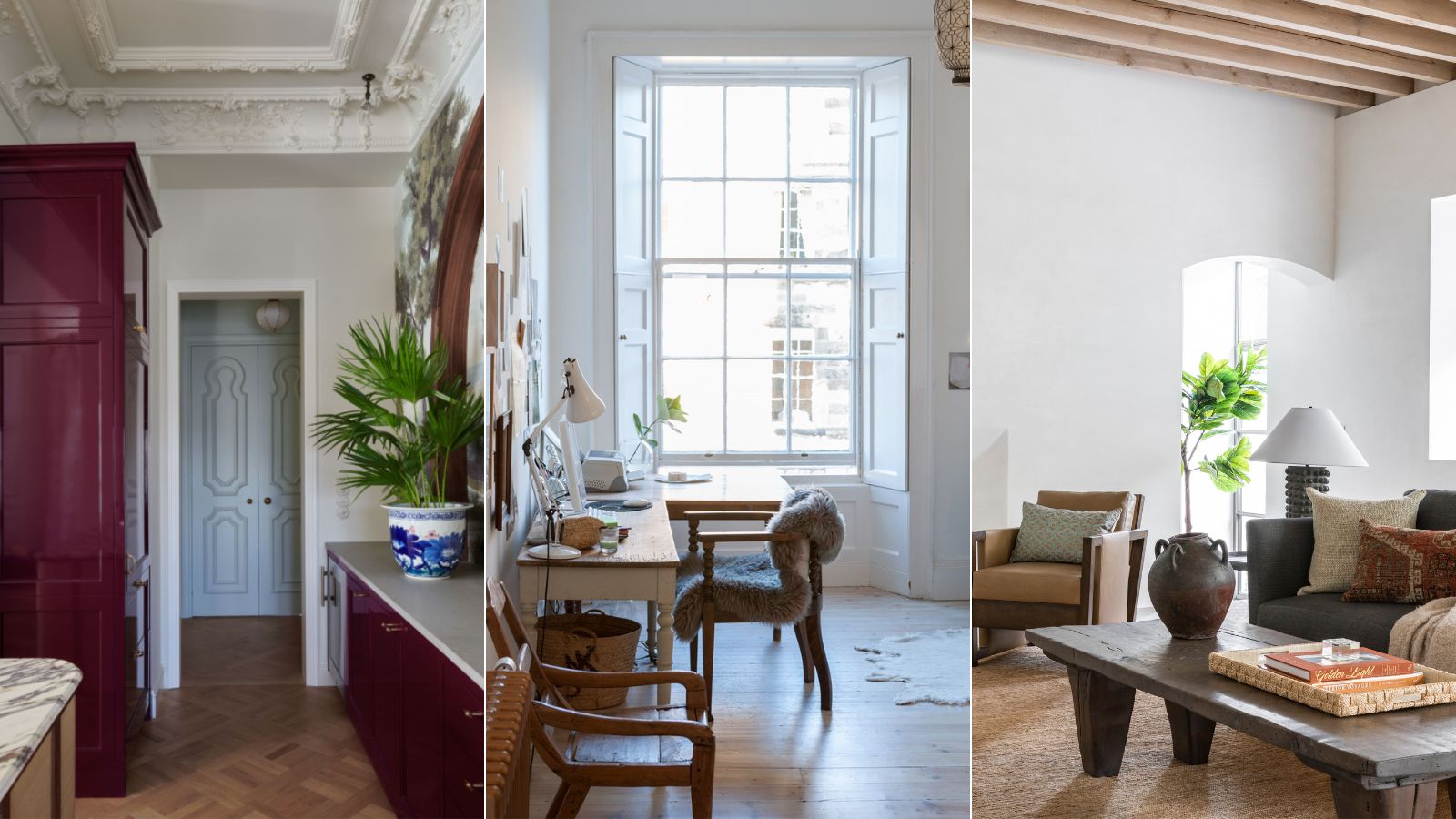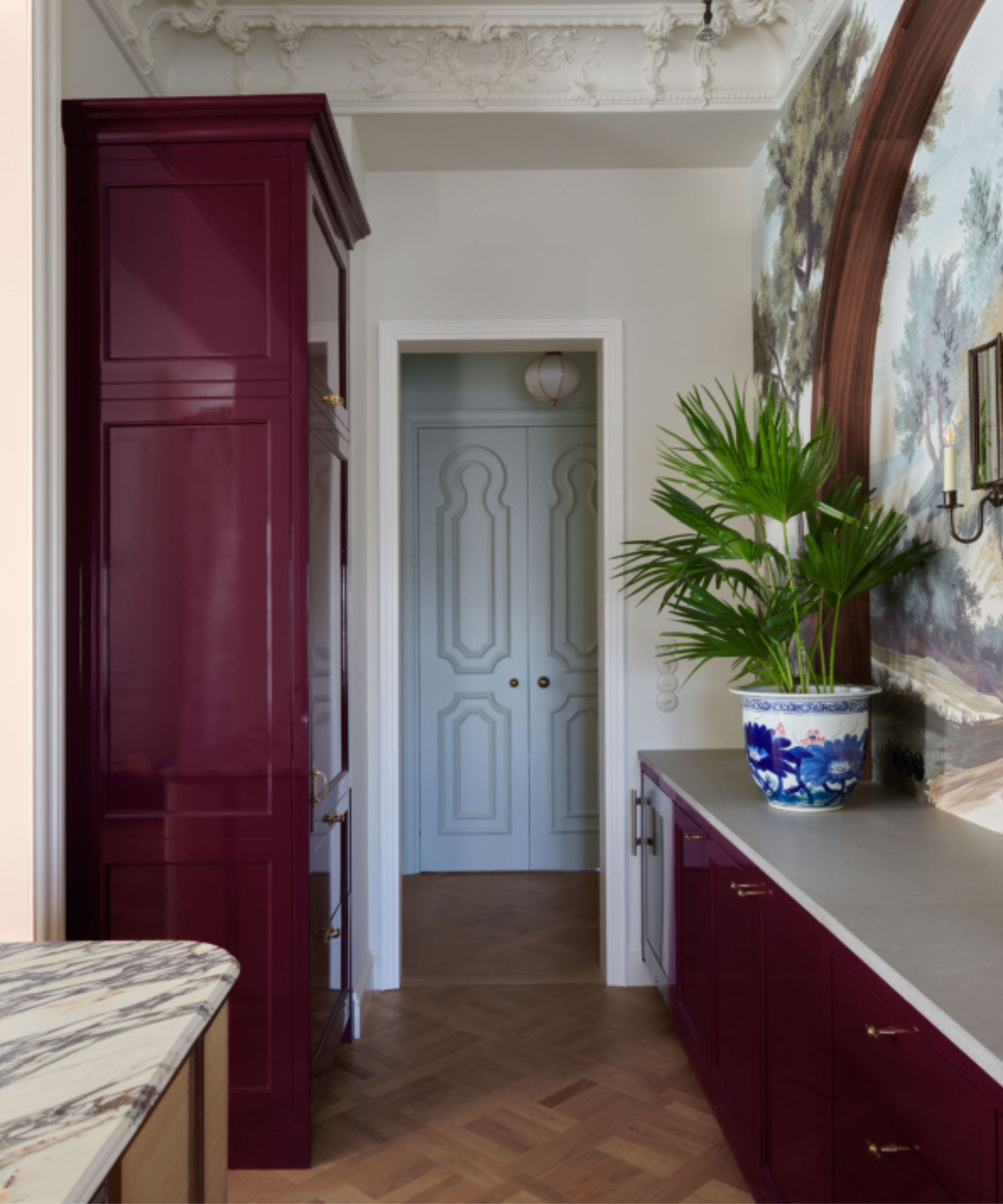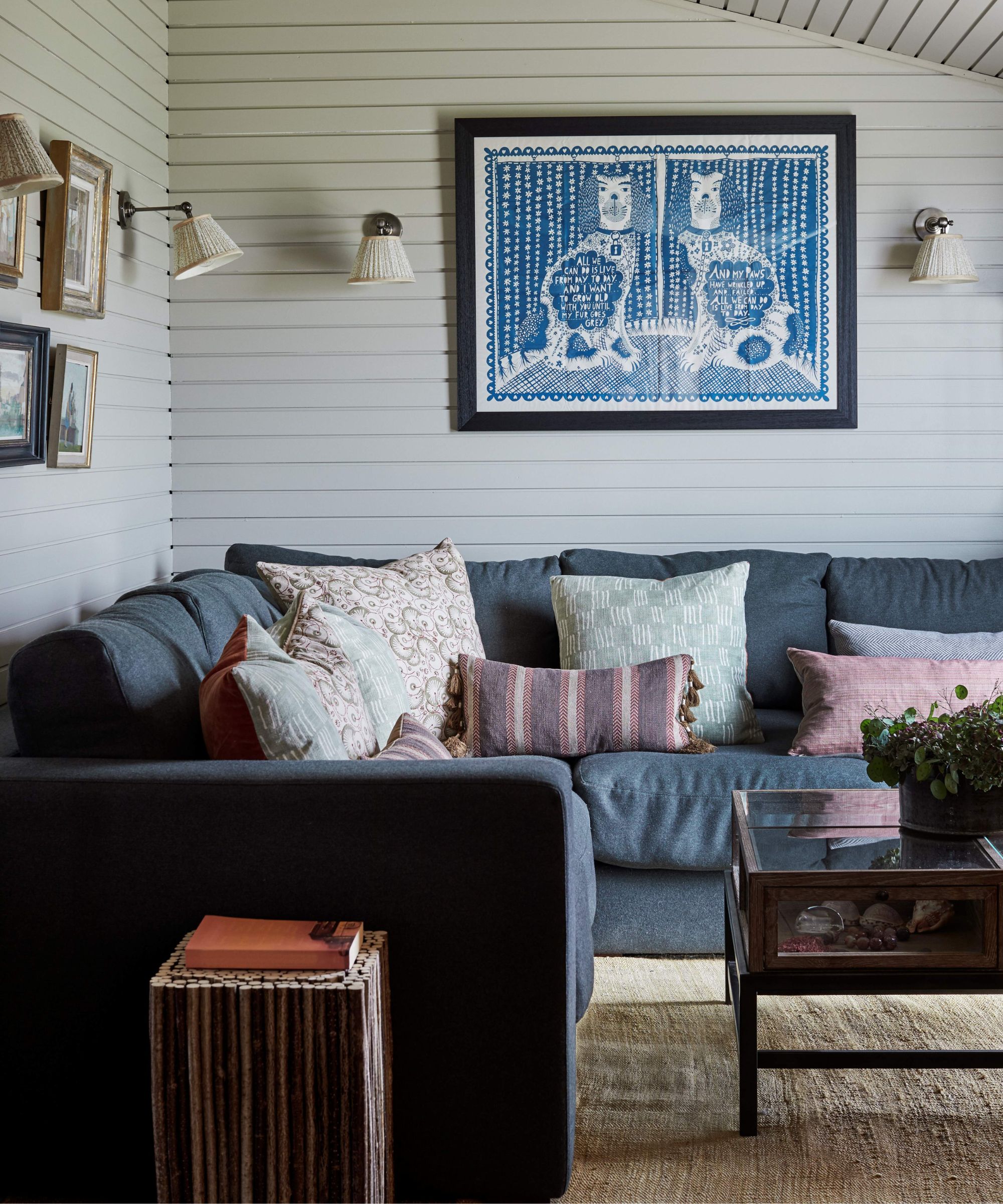I'm moving from a two-story house to a small open-plan apartment – 5 lessons I've learned in downsizing my stuff and my style
Downsizing is hardly fun, but these are the lessons I have learned in order to half my stuff without compromising my interior design style


It's a long, and frankly boring story, but in a few weeks, I am moving from my spacious two-story rental back to my city apartment. One's a two-bed house with a separate kitchen, dining room, and living space and one is a semi-open plan, just over 430 square feet, apartment. I have loved both. However, downsizing everything I have accumulated for a much larger space is not something I am loving.
There's a lot of focus when helping to downsize on the stuff, and while that is coming with its challenges, I am facing the more complex question of how to downsize my style. Along with having to get rid of furniture and decor, comes the task of how this will affect the aesthetic of my space – how can I create the same style in a space half the size? Or do I need to switch up my style slightly to work better in a smaller space?

How I am downsizing my interior design style
Here I share the lessons I have so far learned in downsizing my interior design style plus my furniture and decor to suit a smaller apartment.
1. First consider where key pieces will fit
Decluttering and getting rid of things is not my forte, so I am starting off my downsizing project with the pieces I want to keep. Rather than focus on things I need to get rid of, I am looking at the furniture and decor that I really want to make work in my smaller space.
Take a lot of measurements. I have measured up all the larger pieces I want to bring with me – the couch, the dining table, my bed plus the width of the two bedside tables, and I am getting to work with the masking tape to experiment with different layouts and figure out how and where these pieces can fit. I am doing this before I actually move anything over so if something really isn't going to work, I don't have to deal with it in the space.
And measure the door frames too, will the pieces actually fit into the new space?
2. Think about your lifestyle in a smaller home
To start actually getting rid of things, the easiest way for me is to count up how many of everything I have and then come up with the ideal number I want to get it down to.
For example, I have around 25 prints, I want to get that number down to 15 – not a huge loss since prints are easy to store, but having this target makes it easier to hold myself accountable. I will be taking the same approach for all the homeware categories – pillows, rugs, photo frames, crockery, bedding, towels, etc.
In order to decide on these numbers it can be useful to ask yourself how your lifestyle will be in your new, smaller, place. Will you be hosting dinner parties (and therefore might need some extra crockery)? But perhaps now you won't be able to have as many overnight guests (so you can ditch some guest towels). Do you now just have one bedroom (not as many spare sheets needed)?

3. Donate anything that's clearly dated
It makes complete sense that in a larger space, I have been more experimental with interior design trends. I have always been of the mindset never to lean too hard into new 'trending' styles with the risk that these can very quickly become dated. And while I still stand by that logic, having more rooms (and more storage space) gave me space to bring in those trendy pieces without them dominating.
For example, bringing a wavy mirror into my living room was a nice way to delve into that 2023 trend and I could store my old one and switch it out when I wanted. The same goes for the striped rug I bought, and the rattan floor lamp.
In my apartment, one there's not the luxury of storage space to have more than one of anything, and two, it's a semi-open-plan space so everything is on show, at all angles, all the time.
So I have started my downsizing by donating any decor pieces that I know will look dated when I bring them into a smaller space as they will be more of a focal point. Much smaller, more considered pieces are going to be the way to bring trends into my home now – throw pillows, picture frames, prints. All of these can be switched around with ease and won't take up too much storage space when not in use.
4. Curate the clutter but keep charaterful pieces
You can't downsize without getting rid of things. I am very aware I won't have room for all the smaller decor pieces in my new place so some of them need to go. However, I don't want to get rid of so much that I be compromising on my personal style. What I am keeping in mind when making this cull is timeless, transitional style and that comes with mixing newer pieces with older, more characterful ones.
Characterful decor, that means something to you, doesn't come around all the time. When downsizing I will be holding on to these items, they will stand the test of time and I know I can easily update and adapt them by adding in newer decor as trends and seasons change.
When culling your clutter, think about how you will curate it. What pieces are going to work as part of a collection? And then get rid of anything you can't see working in this display – usually these will be the newer, cheaper, more trend-led items.

5. Be realistic and give yourself time
Downsizing can be a process. While you may want to downsize all the bulkier pieces fairly sharpish, don't feel like you need to get rid of everything in one fell swoop. Set yourself realistic targets for before you move and once you are in you can continue to declutter as you live in the space and have a much clearer idea of how you use it and how your style might change now you have less square footage.
Downsizing needn't mean you have to compromise on your interior design style. Having a declutter just helps really zone in on what aesthetic you love, what pieces are the most important to your aesthetic, and your lifestyle. Having limited space means you don't have room for items that don't work, so I have found that downsizing has in fact made me really aware of my own style and more conscious of shopping habits too.
Sign up to the Homes & Gardens newsletter
Design expertise in your inbox – from inspiring decorating ideas and beautiful celebrity homes to practical gardening advice and shopping round-ups.

I am the Head of Interiors at Homes & Gardens. I started off in the world of journalism in fashion and luxury travel and then landed my first interiors role at Real Homes and have been in the world of interior design ever since. Prior to my role at H&G I was the digital editor at Livingetc, from which I took a sabbatical to travel in my self-converted van (not as glamorous as decorating a home, but very satisfying). A year later, and with lots of technical DIY lessons learned I am back to writing and editing, sometimes even from the comfort of my home on wheels.
-
 How to get rid of bean seed flies – a pest control expert reveals how to keep crops safe from these seed munchers
How to get rid of bean seed flies – a pest control expert reveals how to keep crops safe from these seed munchersAs their name implies, these insects primarily feed on bean crops
By Tenielle Jordison
-
 Sarah Michelle Gellar's kitchen cabinets are moody yet elevated – I've always used dark paint with caution, but they make bolder tones accessible
Sarah Michelle Gellar's kitchen cabinets are moody yet elevated – I've always used dark paint with caution, but they make bolder tones accessibleThe actress's black kitchen cabinets are bold yet palatable, proving that this dark shade is a trendy yet timeless color pick
By Hannah Ziegler